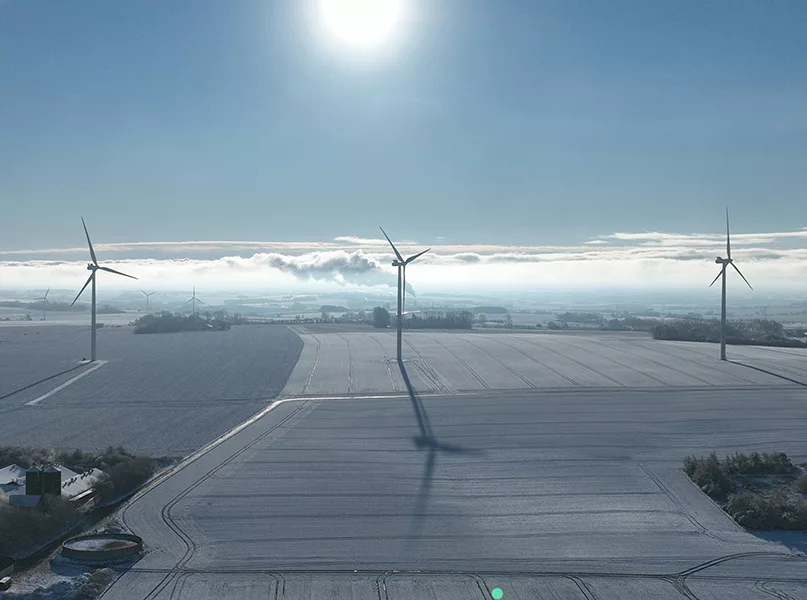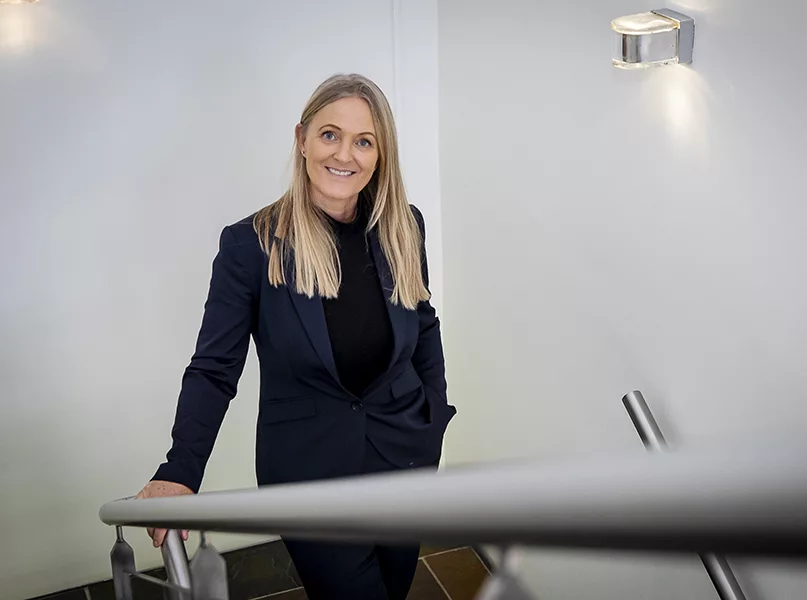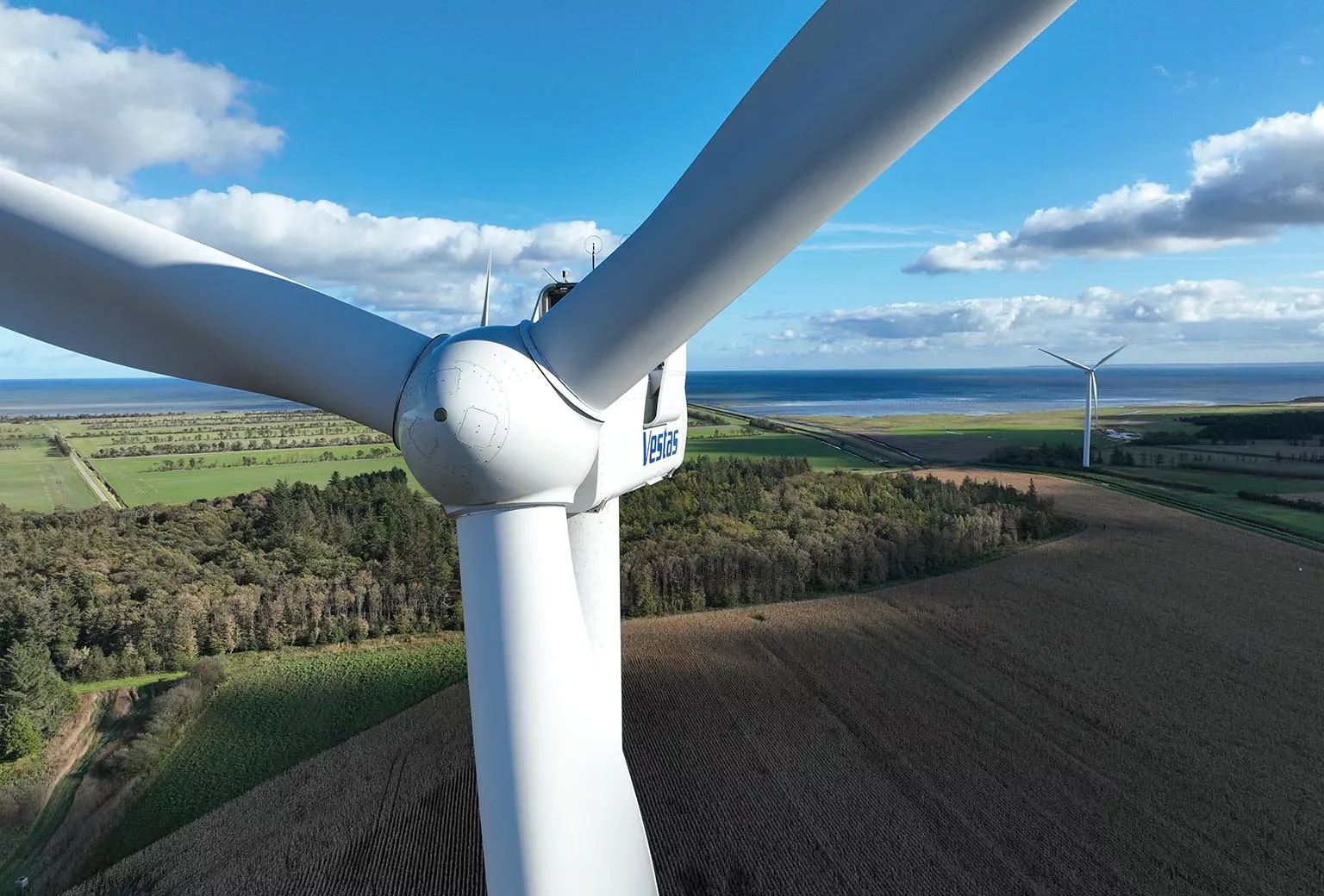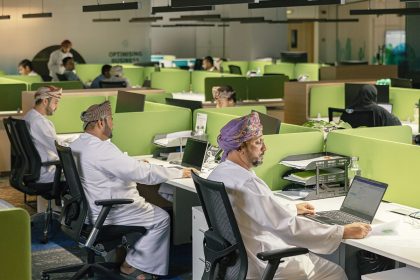Wind Estate, one of Denmark’s leading energy companies, is bringing its longstanding knowledge and expertise to develop its UK portfolio. We learn more with CEO, Ane Mette Lysbech-Kleis.
ESTATE OF THE ART SUSTAINABILITY
Across Europe, the presence of the renewable energy agenda remains strong.
Indeed, the manifestation of climate change and the pressing need for independent, fossil-free power production is growing increasingly evident. Meanwhile, the increasingly concerning, ever-changing nature of our natural environment continues to creep closer and is beginning to tangibly impact many people’s daily lives.
Navigating the expansive European energy industry and the current swathe of environmental turbulence is Wind Estate, one of Denmark’s leading energy companies.
“We develop, buy, construct, own, and operate sustainable wind and solar energy projects in Denmark and the UK,” opens CEO, Ane Mette Lysbech-Kleis.
As such, Wind Estate currently owns and operates approximately 400 wind turbines with a production capacity of 650 gigawatt hours (GWh) and a power capacity of more than 300 megawatts (MW).
“Our business areas span the entire journey of project development, from ideation to the operation of complete onshore and offshore wind turbines, purchases of existing wind turbines, service, maintenance of our own turbines, monitoring, and energy trading, as well as the sale of clean power,” she continues.
Energy from wind power is now widely recognised as the most affordable way of creating new electricity.
In this way, Wind Estate has long been cognisant of the wind industry’s potential, and the company therefore seeks to offer a productive collaboration with those who wish to be part of the vast supply chain.
BECOMING A RENEWABLE FORCE FOR GOOD
Wind Estate possesses turbines from many different manufacturers in its vast portfolio, located over a large geographical area in Denmark. The company services and maintains the older wind turbines itself, while the new ones are maintained by external service providers.
Concurrently, by constantly monitoring all wind turbines in its portfolio, Wind Estate’s renewable energy production functions optimally all year round.
The organisation currently consists of 50 dedicated employees and has always prioritised maintaining a lean and efficient structure. This ensures that Wind Estate can adapt quickly to changes, make decisions efficiently, and remain competitive in the market.
This approach allows the company to maintain an agile and dynamic work culture where each employee’s contribution is crucial to its success.
“Wind as a resource is both extremely generous and intimidating, and being able to navigate and harvest that free power is a true wonder of nature,” Lysbech-Kleis elaborates.
“Being island-born in the southern part of Denmark, water and wind have been part of my life from the early years of my childhood. Then later, the power of wind really made a huge personal impact on my life, giving me the ability to sail the world during my five years of maternity leave,” she recalls fondly.
For Lysbech-Kleis, the renewable industry is the most exciting, complex, and impactful business to be in.
“Now I’m with Wind Estate as CEO, which I enjoy very much, to be able to stay in the utility business, the closeness to the core business, and the almost daily contact with everyone is a true gift,” she affirms.

ENERGY WITH A DIFFERENCE
Since the 1990s, Wind Estate has been intricately involved in the development and acquisition of wind turbines, having always seen renewable energy projects as a sound and future-proof investment.
“One of our core competencies is the acquisition and operation of wind turbines, where we excel at keeping operating costs low with our service team and approach, which also ensures us a position in the market for acquiring existing wind turbines,” enthuses Lysbech-Kleis.
Wind Estate exists today as an energy company that is extremely passionate and dedicated to doing its part in the green energy transition, as well as helping to secure the build-out of green, fossil-free energy whilst still delivering a sustainable business.
“At Wind Estate, you meet only top skilled energy professionals who know what it takes to make green energy excel with high-tech technologies and in an often-challenging political environment,” Lysbech-Kleis informs us.
“Whether it’s greenfield development, acquisitions, construction, or operation, we have top-notch competencies and experience. This is what we have successfully been doing for almost three decades,” she furthers.
Keeping its partners and stakeholders close is key for Wind Estate, as the company believes that success is achieved together through transparent and trustful relationships.
“A mutual understanding of the process and timing is the foundation for our success.”
In the early stages of a project, Wind Estate takes the initiative to ensure the early involvement of local communities. This is part of a company promise to prioritise and value local engagement as Wind Estate’s business model is cradle-to-grave, meaning it sees projects through from early scouting to the production of green energy for many years.
“Whether it’s greenfield development, acquisitions, construction, or operation, we have top-notch competencies and experience”
ANE METTE Lysbech-Kleis, CEO, Wind Estate

THE PRIDE OF OVERGAARD
The largest designated green power production area in Denmark is Overgaard.
One of 32 energy parks in the country, the Overgaard Energy Park is located in the municipality of Randers, which is also where Wind Estate’s headquarters is situated. Upon completion, the area will be approximately 1,400 hectares in size, consisting of wind, sun, and Power-to-X (PtX) production, which will produce enough power to facilitate a minimum of 370,000 households. The Overgaard Energy Park currently houses two developers: Wind Estate and EuroWind.
“We have a good relationship and foster close collaboration with EuroWind, and have jointly developed and planned the currently used area in the most optimal way for both parties,” Lysbech-Kleis describes.
The site is named after the large Overgaard Estate, which dates back to 1500. Wind Estate has been active in Overgaard since 2002, where initially, the first build-out of green production met some resistance from the local community as there were several instances of local farmers blocking the access route with tractors and heavy machinery. However, the situation today is very different, with the help of local buy-in and support from both the community and politicians.
Wind Estate repowered part of its site with larger turbines in 2008, and the company is now planning further repowering and expansion of production at the site as well as the build-out of enhanced solar production processes.
“We estimate the next phase of the project will be completed in 2026, and the new site will be able to produce fossil-free energy until at least 2060,” acclaims Lysbech-Kleis.
Elsewhere, an impressive component of Wind Estate’s burgeoning portfolio is the Pearie Law Wind Farm, a four-turbine site located near West Calder, Scotland.
The successful execution of the Pearie Law Wind Farm and the rest of this central belt cluster will not just represent a significant achievement for Wind Estate, but also a noteworthy step towards a greener and more sustainable future in Scotland.
This project, like all things worth doing, is not without its challenges. Overcoming these challenges will be a testament to the dedication and expertise of the team behind this ambitious renewable energy project. As the Pearie Law Wind Farm takes shape, it will undoubtedly contribute to Scotland’s clean energy portfolio, reduce carbon emissions, and drive the transition towards a more environmentally conscious energy landscape.
OVERCOMING ADVERSITY
The main challenges currently facing Wind Estate come from within the complex renewable energy industry itself, as the sector contends with great uncertainty across the board.
“We currently operate in Denmark and the UK, and both countries are experiencing challenges with grid constraints. The grid is old and insufficient for maintaining the required level of production,” highlights Lysbech-Kleis.
“Due to these grid constraints, we and several of our colleagues have started to intently look into fresh options for direct lines to offtakes and for battery solutions.”
Furthermore, Wind Estate is heavily engaged in the public space and through trade organisations, arguing that there is a desperate need for predictability in the development process and more dialogue between governmental bodies with a common aim and an acceptance of the need for compromise across green energy production to ensure that the EU’s energy targets are met.
During 2024, the company aims to deliver the sustainable growth of energy generation through acquisition and development processes, including the expansion of technologies and markets.
“Moving forward, we must complete a revamp of our end-to-end project processes, enabling us to develop, construct, operate, and decommission our assets with excellence and nothing less,” Lysbech-Kleis concludes enthusiastically.





















